Tuesday, July 31, 2018
Monday, July 30, 2018
Serving the community through Mission of Mercy

Dozens of dental students served at the sixth annual Mission of Mercy in Reading, Pennsylvania (MOM-n-PA). The Santander Arena, normally full of screaming sports fans or concert goers, was transformed into a free dental clinic for those in need. There were 1,900 patients seen May 18-19.
About 927 volunteers made this possible on that rainy weekend. Of the volunteers who served, many were dental students from Temple, Penn and other surrounding schools. Reading native Marko Yacoub, a fourth-year dental student at Temple, says it meant so much to him to give back to his hometown. The District 3 outreach and service consultant believes he has something that “can change a person’s quality of life.” Yacoub says, “My family was in need at one time, so I feel obligated to return the favor, just like strangers had done for us.”
I also was a volunteer in my own hometown, being born and raised in Reading. I served as an oral surgery assistant for the morning. By the time a patient had gotten to us in oral surgery, they already had their health history evaluated and radiographs taken. The oral surgeon simply had to make the final call for the treatment that day and then do the extraction. One mother came to have her molars extracted and to get her son’s teeth cleaned. We saw her at 10:30 a.m. She had stood in the rain since 4:30 a.m. to receive treatment.

The floor of the Santander Arena in Reading, Pennsylvania, transformed into a dental clinic.
Dr. Bernard Dishler is one of the founders of MOM-n-PA, along with chair, Dr. Gary Davis, and facility chair, Dr. Bruce Terry. Dr. Dishler says this year was a huge success and that the event has become even better organized and more efficient, as they continue learning new ways to improve.
This was Yacoub’s second year serving MOM-n-PA. For those of us seeing it for the first time, it was overwhelming and also fascinating — how you could turn over that many instruments and patients so quickly, while keeping such high spirits. Yacoub says, “It’s awesome that we all work together in the arena, and it moves so flawlessly because of everyone’s kind hearts on those days. We will never meet every single person, but when everyone fulfills their task, its smooth sailing ahead.”
Rima Modi, a third-year dental student at Temple, served as an oral surgery assistant as well. “The simple words I heard from patients after an extraction of an infected molar touched my heart: ‘You are a healer. You have magic. Thank you for taking me out of months of pain.’ I did everything without realizing what it would mean to people. Those words made me realize the difference dentists make in society. Those words will always be cherished.”
Anamaria Castillo is a fourth-year at Temple; she assisted in triage as a Spanish translator. This was her third year volunteering, and she says that she leaves changed every time. “[It’s amazing to see] such instantaneous results in such a small amount of time, which end up lasting a lifetime.” She still remembers the first time she volunteered with MOM-n-PA. The first patient was a former model who had been bulimic. They restored her anterior teeth, and she was so happy, she cried. Castillo still tears up when she tells the story.
Dr. Dishler gets to see moments like this every year. He says, “My pay is the appreciation of the patients.” On Saturday morning when he drove into the parking lot at 5:15 a.m., the attendant said to him, “I don’t know if people are thanking you, but I really appreciate what you are doing.” Dr. Dishler said he was tired, but those words came at the right time.
“People had been thanking us, but that appreciation when I was tired and had to get ready for another busy day put a little snap in my step and [prepared me] for another great day,” he says.
Through these types of experiences, we gain perspective as to why we chose this profession as well as the ability to evaluate the need of those in our own community. We learn just how big the impact our service is to patients. MOM-n-PA will be planting its feet in Wilkes-Barre, Pennsylvania, June 7-8, 2019. Let’s see what next year brings.
~Angela Walter, Temple ’20, Contributing Editor, Operation Smile VP, Chapter Membership Chair
Friday, July 27, 2018
Thursday, July 26, 2018
Properly managed debt can be an investment in yourself
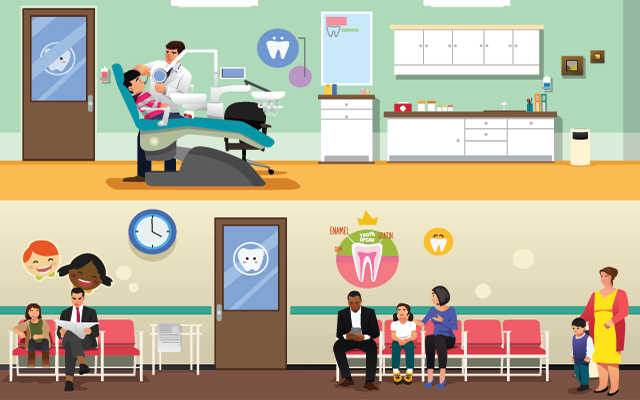
As a dental student, you may already be carrying significant student loan debt. Paying down that debt requires income — cash flow that may best be generated by opening or buying into your own practice upon graduation. New dentists and those about to graduate often feel caught in a vicious circle when they perceive that debt may deny them a practice loan and prevent them from moving forward in their career.
But don’t focus solely on the dollar sign on your loan. Other factors, such as understanding the credit process, can make the difference between successful debt management and scrambling to pay bills.
Sabrina Morrow, MBA, is a business development manager who specializes in helping small business health care clients with practice startup, acquisition, expansion and transition. In the article, “Does student loan debt preclude practice ownership?” she explains how it’s important to understand the credit system and loan process so you can approach debt with clear eyes and an intelligent approach.
“Student loan debt in and of itself does not prohibit you from owning a practice or being in private practice,” she notes. She suggests that you ask yourself two questions:
- Is my credit strong enough to allow me to get the financing I need for my practice?
- What does my credit history tell a lender?
In the “Demystifying the Practice Loan Process” webinar, Morrow explains the five factors reporting agencies generally use to calculate credit scores, along with their relative importance:
- Payment history (Have you made your payments on time?): 35 percent
- Outstanding debt (How much do you owe?): 30 percent
- Credit history (Length of time you’ve had credit): 15 percent
- Pursuit of new credit (Are you looking for new debt, and how might it affect your total amount of debt?): 10 percent
- Types of credit in use (e.g. mortgage, installment loans, revolving credit): 10 percent
Most financial institutions consider student loan debt to be different from consumer debt, such as a car or a home loan, because a practice will generate income, while a car depreciates in value over time. Major banks have found the failure rate in dental loans to be less than 1 percent, which makes them a positive investment from the lender’s point of view.
Morrow notes the importance of developing and maintaining your credit profile, understanding how an application becomes a loan and assembling a team of financial advisers to ensure success. She also advises taking steps to protect against identity theft, identifying prepayment penalties in advance and being prepared to work with the lender if issues arrive during loan repayment.
Of course, managing a successful practice requires continued effort and a sound business plan, and obtaining a practice loan doesn’t guarantee success. Understanding your loan options and managing your credit history is simply the first step in a successful career.
~ADA Center for Professional Success
This content is sponsored and does not necessarily reflect the views of ASDA.
Wednesday, July 25, 2018
Mind full or mindful?
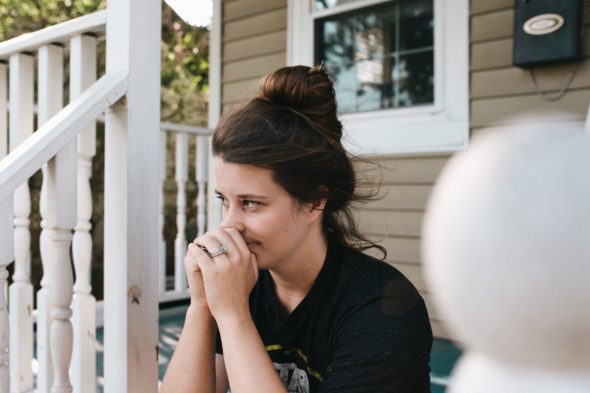
How is your body positioned at this moment? How are your arms and legs situated? Are your shoulders slouched? Is your head bent over?
Regardless of the answers, you just practiced mindfulness simply by becoming aware of the present moment. We often go through a whole day without checking in with our bodies. Our minds are constantly jumping from one thought to the next without a break. We rarely allow our minds to rest for even a few minutes in a day.
However, being mindful does not mean having a completely blank mind. Mindfulness is purely being in the moment. It is not thinking of the past or the future but being aware of what is currently happening. This is the essence of meditation, one of the most common ways to practice mindfulness. Lighting incense, lining your room with crystals, or adopting a certain religion isn’t necessary for meditation. It can be practiced anywhere, anytime.
I have been meditating on and off for a few years now. I do not consider myself anywhere near proficient but have harnessed techniques that I implement at school. A great benefit is being fully present during a lecture. Everyone has thoughts that cross their mind in class. “I wonder if anyone has texted me.” “I wonder what is happening anywhere else in the world other than this classroom.” The skill of being more observant of my thoughts helps me recognize that my thoughts have wandered, and I am able to bring my focus back to the task at hand. An important part of this practice is not constant focus, but consciously bringing your attention back once it has wandered. This can be applied in the clinic, while studying, or even during conversations and interactions with others.
I can also recognize when I am having negative or self-deprecating thoughts in stressful situations. I can acknowledge the thought, understand it does not define me and let it go. Another important aspect of mindfulness is to not judge your thoughts. Believing or avoiding your thoughts can be detrimental. Instead, acknowledge them as fleeting objects of the mind.
In addition, it is shown that meditation can lower cortisol levels. A mindfulness practice can also help reduce the risk of suicide. Any type of mindfulness practice can be a helpful tool for prevention.
There are many ways to practice mindfulness, so there is a type for everyone. A good way to begin is with meditation apps such as Headspace, Calm or Oak. Yoga is also a popular way to practice mindfulness.
My personal favorite is focusing on your breathing for one or two minutes. Here’s how you do it: Close your eyes and mentally scan your body from head to toe. Note how you are physically positioned. Don’t change it, just observe it. Now, with your eyes still closed, focus on the rhythm of your breathing. Feel the air flow in and out of your lungs. Feel your abdomen softly rise and fall. Try not to control your breathing, but allow it to occur naturally. Continue this for the next minute. Your mind may wander to something else which is normal. Once you have acknowledged the thought, gently bring your attention back to the rhythm of your breathing.
How’d that feel? For some, it might be easy, for others quite difficult. The consistent focus isn’t the practice of mindfulness, it’s the recognition of the mind wandering and coming back that is the practice. Mindfulness is like a muscle you train. The more you train it, the stronger it becomes. This is challenging for most type-A personalities, a common trait of dental students. We continuously have conversations with ourselves throughout the day via our thoughts. We cannot be fully present in the moment until we quiet the mind and allow it to rest for a moment. Our families, friends, future patients and, most importantly, ourselves will benefit from just a few minutes of a restful mind each day.
~Gerard Scannell, Louisiana ’21
Tuesday, July 24, 2018
Monday, July 23, 2018
Could a dental student be the next ‘MasterChef’?

Contestant Farhan Momin in the “Big Not Easy” episode of “MasterChef,” which aired Wednesday, July 18 (8-9 p.m. ET/PT) on FOX. © 2018 FOX Broadcasting.
“MasterChef” is a cooking reality TV show currently in its ninth season, which premiered May 30, 2018 on FOX. Talented home cooks compete through a series of challenging elimination rounds for the winning title of Master Chef and a grand prize of $250,000.
Like every fourth-year dental student, Farhan Momin, Midwestern-Illinois ’19, hopes to graduate soon and begin his professional career. But how many dentists can say they took a semester off during dental school to hone their culinary skills on national television? Here, Farhan discusses how he combines both his professional and creative passions.
Was there a specific experience that inspired you to pursue the culinary arts?
There was not a specific experience that inspired me to cook, but rather an admiration of the process of making food. Growing up, my mom always made time to cook a meal after work, no matter how tired she was from her day. I wanted to do my part to help, so she brought me into the kitchen at a young age to be her assistant. I was assigned my special knife, and I had the duty of cutting vegetables and stirring the pots. From these early interactions, a true passion and love for food developed.
How long have you been cooking?
I have been helping my mom in the kitchen since I was about 7 years old. The first meal I cooked on my own was a fried chicken sandwich when I was about 8. There were a ton of spices and, honestly, it did not taste very good, but it was mine.
What kind of food do you like to cook?
My style of cooking is based on food memories. I take the flavors I grew up eating at home and combine it with foods from around the world. I started this journey with taking Indian flavors and making them more accessible by putting them into familiar form factors. An example of this is the dish that got me the White Apron on “MasterChef,” which was my Tandoori Chicken Biscuit. I take the classic chicken biscuit and reimagine it as my parents would have made it.
Any plans to share your recipes?
I currently have a blog, Farmocooks.com, where I share my recipes and insight. This has been my primary medium for connecting with people and spreading this new way of looking at Indian cuisine.
How have you been able to juggle both dental school and being on the show?
Honestly, this was the toughest part about being on “MasterChef.” I knew that participating in the show would mean taking time off from school and delaying my graduation. I also knew that I could not give up this once-in-a-lifetime opportunity, and I had to go for it. Luckily for me, the administration at Midwestern was understanding and accommodating with me.
Now that I am back to school, juggling dentistry and cooking has been difficult but still rewarding. Typically, I get home and make myself dinner, which I force myself to get creative with. This way, I can keep creating and producing content for my blog, and stay on top of things with school.
What was the process like to get on “MasterChef”?
This part was the most interesting for me. I showed up to this location in downtown Chicago where open castings were held. I brought my now-famous Nihari Sandwich, which is based on a traditional Indian stew, but in a familiar form factor. The producers who were there took one bite and the rest is history.
Tell us what the most stressful and the most rewarding aspects of being on the show are.
The judges’ tastings were both the most stressful and rewarding experience. When they love your food, you feel on top of the world because these are some of the best culinary minds on the planet. When they hate your food, they really are not shy about telling you. The moment where Chef Aaron said my chicken biscuit was one of the best things he has ever tasted in the “MasterChef” kitchen is a top 10 moment in my life.
What is your advice to other home cooks?
That it is OK to make mistakes. Pushing yourself out of your comfort zone is how you improve and develop your skills.
What are your plans after dental school?
My post-dental school plans are to find a way to combine both my cooking and dental passions. I am not sure how I will do that just yet, but I do have a few ideas in the back of my mind. The dream is to be a dentist and to own a restaurant where I can showcase my style of food. I always joke with my patients now that I am going to start handing out coupons for samosas after cleanings.
The season started with 43 home cooks competing for the title of Master Chef. Currently, Farhan is one of the top 15. Tune in next Wednesday (8-9 p.m. ET/PT) on FOX to find out if he makes it to the next round of the competition for a chance to win the title of Master Chef!
~Lana Khazma, Texas A&M ’20, Electronic Editor
Friday, July 20, 2018
Thursday, July 19, 2018
Wednesday, July 18, 2018
Treating patients with dementia
This post is in honor of those who live with dementia and to their care partners. In specific, this article is in memory of my grandfather, Ray Hill, who lived with Alzheimer’s for seven years, and in dedication to my grandmother, Anna Hill, who lovingly cared for him until August of last year.
It is estimated that by 2030, 20 percent of the total U.S. population will be 65 years or older. About five percent of the aging population is edentulous, and this number is expected to dwindle as more older adults are retaining their natural teeth. This group may be placed into one of three broad categories: (1) functionally independent older adults; (2) frail older adults; (3) functionally dependent older adults, according to an article in the Journal of the American Dental Association.
Working with the third group will increase your flexibility to accommodate the physical, sensory and cognitive impairments associated with aging. The demographic of older adults (65 years and older) is increasing and will be a large part of your future dental practice.
Let’s examine a subset of the third category. Dementia is the loss of cognitive functioning ranging from memory, language, visual perception, problem solving, self-management, and the ability to focus and pay attention. It is common in adults over 85 years old but is not considered an aspect of normal aging. The most common cause is Alzheimer’s disease, but there are many other forms.
Here are some tips from the American Dental Association and Alzheimer’s Association to help you best treat patients with dementia.
Ask the patient’s loved one to help attain an accurate medical and dental history. Before the patient arrives, ask for their caretaker to arrive with an updated list of medications. If they do not have an updated list, ask which pharmacy they use and call to obtain one. Once the patient arrives, ask for him or her and their caretaker to come into the examination room. Direct your comments and questions to your patient, but let the caretaker help answer challenging questions.
Give your patient the chance to tell their story. Ask your patient to describe what is going on only one time. Repeating their story to several staff members can be exhausting, especially if they’re in pain. Have your staff actively listen and take notes, or you can listen in the first time it is told. Your attention is important, as you might be the only person that individual engages with that day. Giving them time and allowing your patient to express their concerns builds trust.
Instruct the patient by giving one direction at a time. Patients with dementia may be easily confused when given multiple commands. Rather than asking your patient to sit in the chair, lean back and open their mouth all at once, break it up. Have the patient sit and once comfortably seated, prompt them for their story. After actively listening to their concerns, explain you will lean them back. Once the chair is reclined, do your exam.
Perform a full exam each visit. Treatment of pain depends on communication. Patients with dementia can suffer long-term due to their difficulty communicating. The patient may claim they have no pain or vice versa. Inform their caretaker that refusing to eat or straining faces while eating may be indicative of dental pain. It is important to update their radiographs while patients are still compliant because you may not be able to get them later on.
These three tips ensure that the patient is taking care of their mouth daily and can be shared with caretakers:
- Break down the directions of brushing teeth rather than just saying “brush your teeth.” Instead, say “hold your toothbrush,” “put toothpaste on your brush,” “put the brush in your mouth,” “clean your teeth.” Allow the patient to follow each instruction in between.
- Have the patient hold his toothbrush with toothpaste on it and brush your own teeth while the patient watches. The patient may follow suit. If he doesn’t, it is suggested to assist him by putting your hand on his elbow to guide the brush into their mouth and then instruct them to brush. The patient may then allow you to help them by putting your hand over his. However, don’t push his boundaries. If agitated or combative, wait to brush their teeth later.
- Advise them to use fluoridated rinses. Even rinsing with water after each meal may help. Pour the patient the appropriate amount of mouth rinse and tell them to swish and spit. If the patient appears confused about the directions, show them what you mean by rinsing yourself. Remember to break the directions up into step-by-step instructions.
Both the ADA and Alzheimer’s Association recommend that patients with dementia keep going to the dentist for routine care for as long as possible. This will ultimately keep gum disease and decay to a minimum and prevention at the forefront of care.
~Anna E. Hill-Moses, Tennessee ’19, District 4 Trustee

Download the flash guide for ideas on reaching out to this special population.
From June to August 2018, ASDA’s National Outreach Initiative (NOI) focuses on the unique needs of the growing geriatric population. Launched in summer 2017, the NOI promotes community outreach and raises awareness about the special considerations in caring for underserved populations. The NOI will focus on displaced populations (including the homeless, refugees, migrant workers and natural disaster survivors) from September to November. Veteran populations will be the focus from December to February 2019.
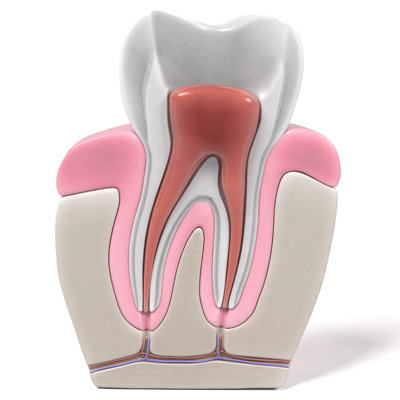 With endodontic files, reciprocating mechanisms are claimed to improve cyclic resistance and fatigue while also avoiding torsional failure, leading to better outcomes. Researchers put two nickel-titanium files through tests to see if these claims held up.
With endodontic files, reciprocating mechanisms are claimed to improve cyclic resistance and fatigue while also avoiding torsional failure, leading to better outcomes. Researchers put two nickel-titanium files through tests to see if these claims held up.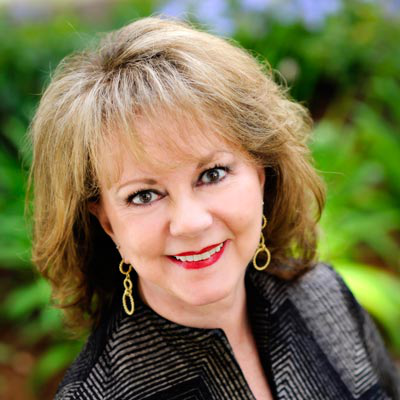 Sometimes thinking outside the box means looking at marketing methods your competition has forgotten about. As practice management consultant Sally McKenzie writes, direct mail is pretty old school. But in this day of email and digital marketing, she offers five reasons why it can still be effective for your practice
Sometimes thinking outside the box means looking at marketing methods your competition has forgotten about. As practice management consultant Sally McKenzie writes, direct mail is pretty old school. But in this day of email and digital marketing, she offers five reasons why it can still be effective for your practice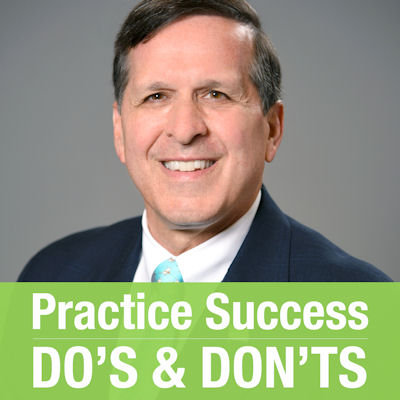 You can't just wing it when it comes to communicating with patients. Knowing what to say greatly enhances every interaction. Excellent scripting is powerful, effective, and allows dental teams to improve performance on a daily basis, notes Dr. Roger P. Levin in his latest Practice Success tip.
You can't just wing it when it comes to communicating with patients. Knowing what to say greatly enhances every interaction. Excellent scripting is powerful, effective, and allows dental teams to improve performance on a daily basis, notes Dr. Roger P. Levin in his latest Practice Success tip. Multiple oral health advocacy organizations and the American Dental Hygienists' Association (ADHA) are calling for the U.S. government to add dental benefits to Medicare. The latest movement started after Oral Health America published a white paper in support of the concept.
Multiple oral health advocacy organizations and the American Dental Hygienists' Association (ADHA) are calling for the U.S. government to add dental benefits to Medicare. The latest movement started after Oral Health America published a white paper in support of the concept.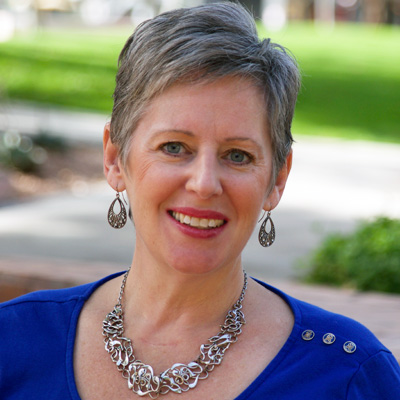 Adding an associate might be the next step in the natural evolution of a dental practice. However, many practices experience issues with a new associate, writes practice management consultant Jen Butler. She outlines three of the most common pitfalls and how to handle them so the practice can grow.
Adding an associate might be the next step in the natural evolution of a dental practice. However, many practices experience issues with a new associate, writes practice management consultant Jen Butler. She outlines three of the most common pitfalls and how to handle them so the practice can grow.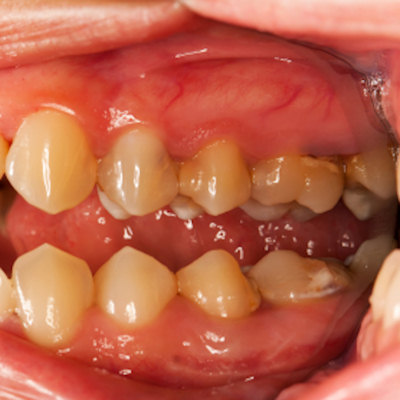 Traditionally, a periodontal probe has been used to assess pocket depth. But can photoacoustic imaging offer more consistent and detailed results? A study presented at the 2018 International Association for Dental Research meeting in London compared the two methods.
Traditionally, a periodontal probe has been used to assess pocket depth. But can photoacoustic imaging offer more consistent and detailed results? A study presented at the 2018 International Association for Dental Research meeting in London compared the two methods.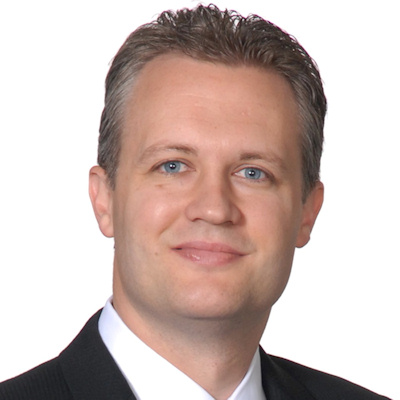 Zachary Hoard, JD, advises entrepreneurial dentists every day on the benefits, and roadblocks, to practice expansion and dental service organization (DSO) formation. He talks with DrBicuspid.com about focusing on practice growth and forming a small-group practice.
Zachary Hoard, JD, advises entrepreneurial dentists every day on the benefits, and roadblocks, to practice expansion and dental service organization (DSO) formation. He talks with DrBicuspid.com about focusing on practice growth and forming a small-group practice.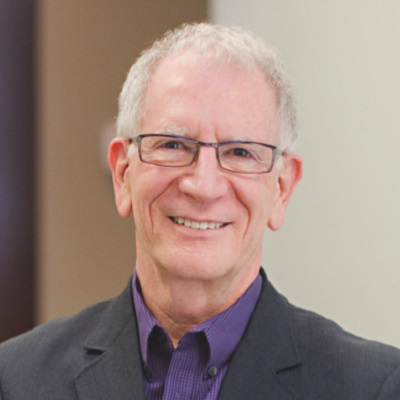 When periodontist Dr. Alvin Danenberg is in conversation with colleagues, his team, and his patients, he sometimes hears certain information reported as a fact. Dr. Danenberg reminds them not to believe everything they hear, starting with these five myths.
When periodontist Dr. Alvin Danenberg is in conversation with colleagues, his team, and his patients, he sometimes hears certain information reported as a fact. Dr. Danenberg reminds them not to believe everything they hear, starting with these five myths. How is your practice doing relative to practices down the street and across the U.S.? Alitta Boechler of Sikka Software looks at the seven-year trends of five more key numbers in the second of a two-part series. This time she examines referral patients, accounts receivable past 90 days, diagnostic imaging, and more.
How is your practice doing relative to practices down the street and across the U.S.? Alitta Boechler of Sikka Software looks at the seven-year trends of five more key numbers in the second of a two-part series. This time she examines referral patients, accounts receivable past 90 days, diagnostic imaging, and more.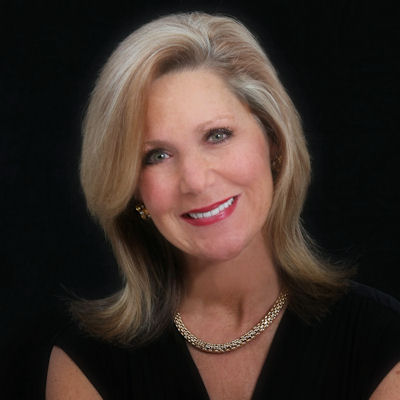 Does your practice struggle when it comes to talking about oral cancer and the human papillomavirus (HPV) with patients? Dentist and health educator Dr. Susan Maples offers seven tips for how to start and have this lifesaving but sometimes difficult conversation.
Does your practice struggle when it comes to talking about oral cancer and the human papillomavirus (HPV) with patients? Dentist and health educator Dr. Susan Maples offers seven tips for how to start and have this lifesaving but sometimes difficult conversation. In 2018, the majority of dental school applicants were women and nonwhite. American Dental Education Association President and CEO Dr. Richard Valachovic spoke with DrBicuspid.com about what the changing demographics of dentistry could mean for the profession.
In 2018, the majority of dental school applicants were women and nonwhite. American Dental Education Association President and CEO Dr. Richard Valachovic spoke with DrBicuspid.com about what the changing demographics of dentistry could mean for the profession.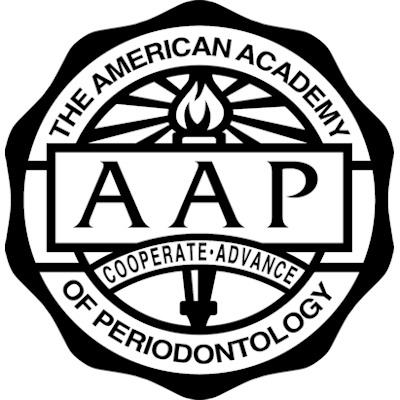 A third of people eat after they've finished their nighttime teeth-cleaning routine, according to the findings of a new survey from the American Academy of Periodontology (AAP). The survey results can help inform dentists about how patients live their lives and educate consumers on the importance of proper oral care, notes AAP President Dr. Steven Daniel.
A third of people eat after they've finished their nighttime teeth-cleaning routine, according to the findings of a new survey from the American Academy of Periodontology (AAP). The survey results can help inform dentists about how patients live their lives and educate consumers on the importance of proper oral care, notes AAP President Dr. Steven Daniel. Reports of infrequent but prolonged parasthesias after the use of 4% articaine beg the question of whether this local anesthetic is more neurotoxic than lidocaine. To learn more, researchers conducted in vitro experiments that produced some unexpected results.
Reports of infrequent but prolonged parasthesias after the use of 4% articaine beg the question of whether this local anesthetic is more neurotoxic than lidocaine. To learn more, researchers conducted in vitro experiments that produced some unexpected results. Better relief for acute pain using fewer opioids may be on the horizon thanks to new research into a chemical compound that targets multiple pain receptors. Researchers found that the addition of one type of protein provided better pain relief at a lower morphine dose in rodents.
Better relief for acute pain using fewer opioids may be on the horizon thanks to new research into a chemical compound that targets multiple pain receptors. Researchers found that the addition of one type of protein provided better pain relief at a lower morphine dose in rodents. Dr. Roger P. Levin explores practical ways you can tackle stress in his latest monthly column, based on the most thought-provoking topics from the Dental Business Study Clubs, an organization focused on the business of successful dentistry. This month, Dr. Levin shares ways you can decrease and manage your stress.
Dr. Roger P. Levin explores practical ways you can tackle stress in his latest monthly column, based on the most thought-provoking topics from the Dental Business Study Clubs, an organization focused on the business of successful dentistry. This month, Dr. Levin shares ways you can decrease and manage your stress.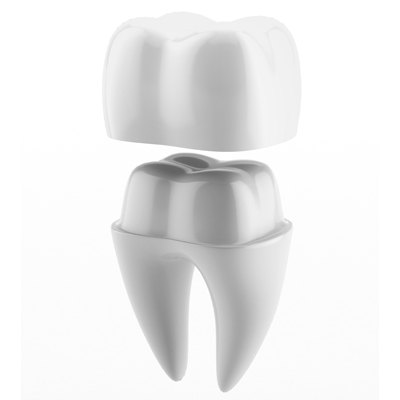 As two-piece implants have become standard, adherence of the crown to the abutment is critical for implant success. Researchers tested four different CAD/CAM implant-supported crown materials to measure their retention values and found cobalt-chromium crowns offered the most resistance.
As two-piece implants have become standard, adherence of the crown to the abutment is critical for implant success. Researchers tested four different CAD/CAM implant-supported crown materials to measure their retention values and found cobalt-chromium crowns offered the most resistance. It's always an excellent idea for dentists and team members to know what numbers are making an impact on their practice's bottom line and to have some numbers for comparison to see how well you're doing. Alitta Boechler of Sikka Software looks at the seven-year trends of five key numbers in the first of a two-part series.
It's always an excellent idea for dentists and team members to know what numbers are making an impact on their practice's bottom line and to have some numbers for comparison to see how well you're doing. Alitta Boechler of Sikka Software looks at the seven-year trends of five key numbers in the first of a two-part series.